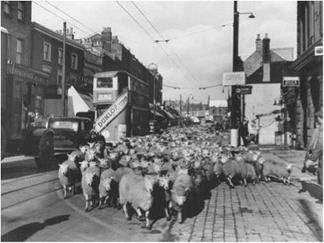Prior to the Industrial Revolution, the absence of sophisticated, high capacity transport systems and
|
of preservation techniques such as refrigeration, inevitably meant that people had to grow food close to where they lived. Consequently, for thousands of years, built and cultivated environments co-existed: homes, markets, public buildings, and sacred places were interspersed with kitchen gardens, farms and common grazing land delivering food for the settlement’s population. Towns and cities had distinct edges, often defined by city walls or by geographical features such as rivers or marshland. Open space devoted to food within the city’s boundary might have been small and patchy, but urban settlements would supplement this by using a distinct rural area around their boundaries for food production.
Food that was grown outside built settlement boundaries presented few supply and transport problems given the small size of pre-Industrial Revolution
|
Figure 13.3 |
settlements. Nearly all European towns and cities did not exceed 30000 inhabitants living on an average 5 hectare urbanised area. Even London, as late as the seventeenth century, was contained almost entirely within a mile and a half radius, ensuring that virtually all of its inhabitants lived close to the countryside and to their source of food production.





